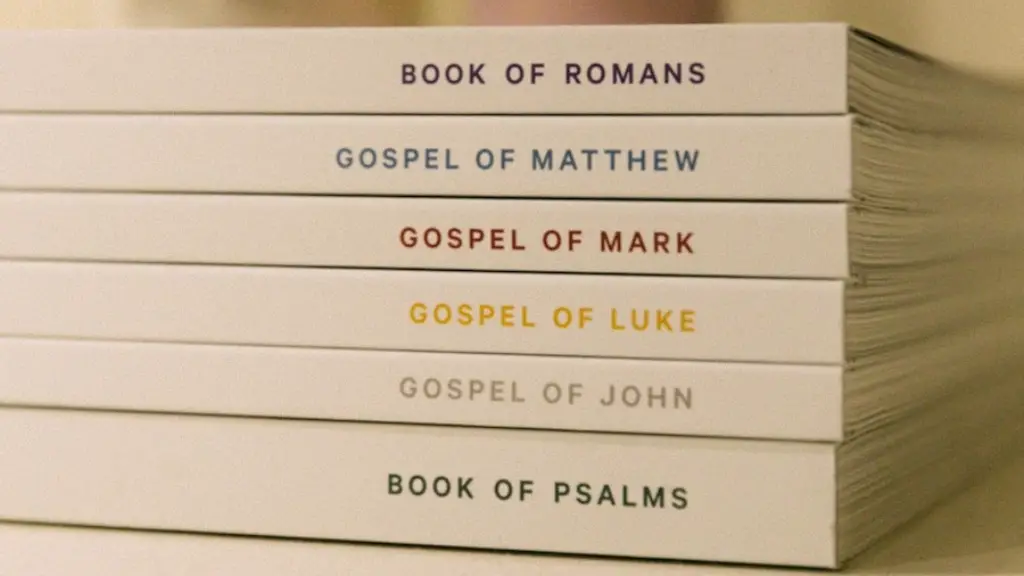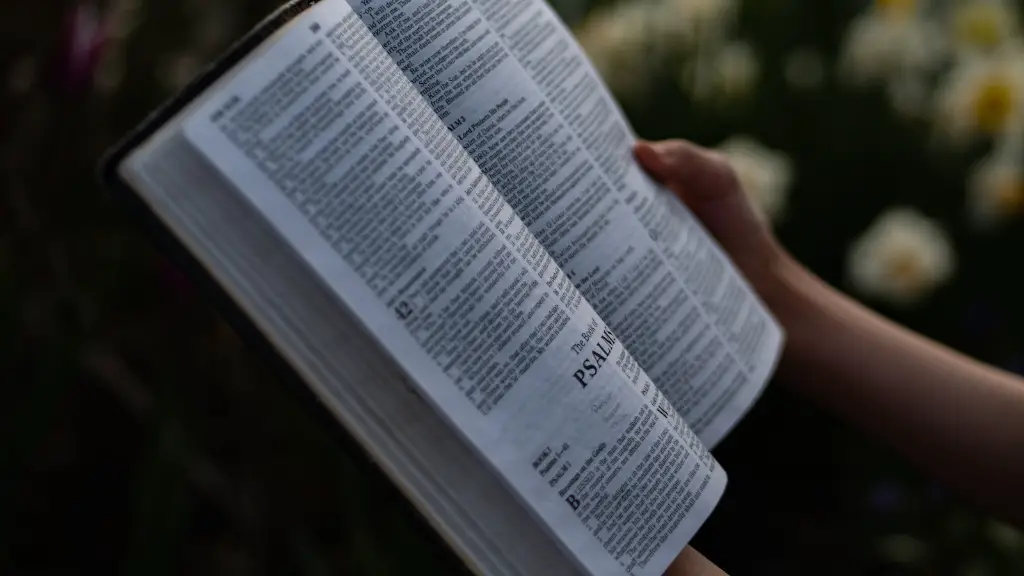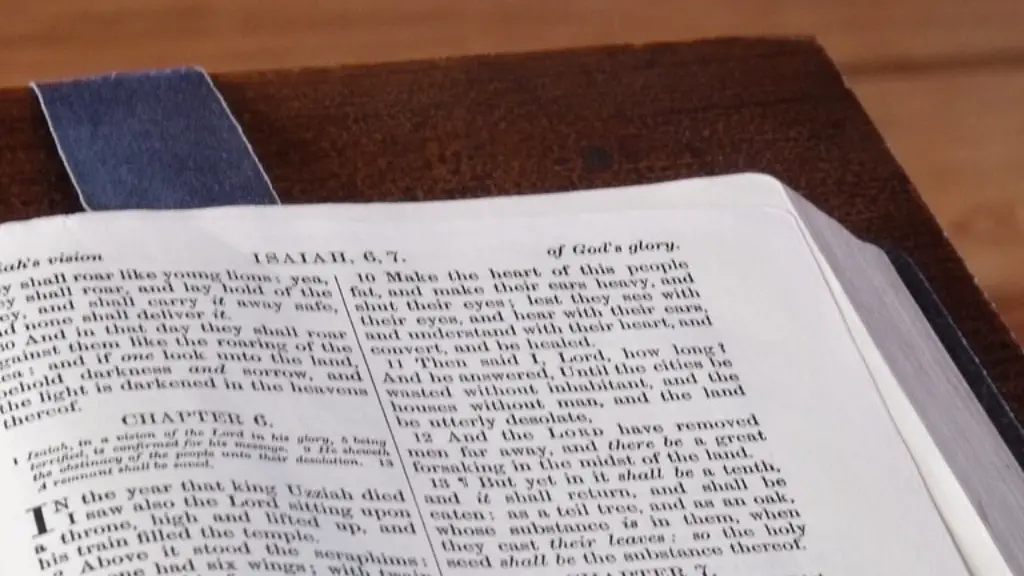Revelation is the final book of the Bible and plays a major part in the beliefs of many Christian denominations. Written between 68-95 AD by the Apostle John, the book of Revelation is seen as a prophecy and a source of hope for many. While the origin and author of the book is not certain, there are many theories about who wrote it.
The general wisdom amongst Christian scholars is that the author was the Apostle John due to the characters and places mentioned in the book. The early church father Papias supported this opinion, and this is based on the understanding that John was a prominent and respected leader in the early church.
It’s thought that the book of Revelation was likely written during a period of persecution and hardship for the early Church. The book speaks of a time of struggle, with symbols of death and destruction all throughout the text. It is seen as providing hope for those struggling for survival, and a promise of a coming kingdom.
The language used in Revelation is complex, with a mix of poetry, visions, prophecies and symbols. In some cases, the book has been interpreted to mean different things depending on the political situation at the time. For example, the symbol of the Beast has been interpreted as referring to different ruling powers at different periods in history.
Nevertheless, there is still disagreement over who wrote Revelation in the Bible. Some argue that it was written by someone other than John, such as a follower or even an anonymous author. There is evidence that the writing style used in Revelation is significantly different to that used in other books attributed to John, adding to speculation over the author.
Another theory is that the book is a combination of multiple authors whose ideas and visions have been collected and put together to form the text as we have it now. This is supported by evidence of differences in language, style and level of detail throughout the text.
Revelation is an enigma and its mysterious origin continues to captivate those who take time to study and interpret the book. Whether the author was John or not, the book stands as a testament to the strength of faith and hope in the face of adversity.
Apocalyptic Writings
The Book of Revelation has much in common with other apocalyptic writings, stories set in a time of crisis and disaster. This type of writing was popular in the first century AD and many of these texts were written around the same time as Revelation. These writings often contained symbolic language and messages of divine deliverance.
Many of these texts were concerned with interpreting events in the present and providing hope for the future. They were often used to encourage the people to persevere in the face of adversity and to believe in a coming kingdom. It is likely that Revelation was written with the same intent.
The apocalyptic genre is a type of literature that was very common amongst the Jews during this time, as it not only explains events as part of God’s plan, but also provides comfort and explanation for why certain unfortunate events are taking place.
The apocalyptic genre has continued to be popular, and contemporary interpretations of Revelation continue to be written. It provides an opportunity for people to explore their beliefs and to make sense of a turbulent world. It also serves as a reminder that in the darkest of times, faith and hope can prevail.
A Sign Of The End Times
One of the most popular theories regarding Revelation is that it is a sign of the end times. This theory would explain why many of the symbols within Revelation have been interpreted as being portents for the end of the world. It is thought that some of the visions of John in Revelation correspond to specific events in history and could be seen as indicators for the end of days.
The belief in the impending end times was strong in the first century AD and would have been used as a source of comfort for persecuted and oppressed individuals. Revelations reference to a ‘heavenly city’ and a ‘new Jerusalem’ could be seen as an offering of hope and salvation, even in times of distress.
The idea of an impending end times has been a part of religious belief for centuries, with many different denominations subscribing to different interpretations. In the 21st century, the idea of the end times is still prevalent, with many people believing that Revelation speaks of a coming apocalypse.
Whatever the interpretation, Revelation is a powerful book of faith and hope. It offers comfort in times of crisis and is a reminder that God is with us, even in times of hardship and suffering.
The Interpretation of Revelation
Due to the enigmatic nature of Revelation, there have been a variety of interpretations of the text throughout the centuries. From the time of its writing to the present day, religious scholars have battled to make sense of the mysterious symbols, images and prophesies.
The text has been interpreted in many different ways depending on the dominant political and religious systems of the time, and as such has been seen as both a source of hope and a warning of future dangers. Some of the most popular interpretations, such as those concerning the return of Christ or the ‘seven-sealed scroll’ have become ingrained in popular culture and continue to be debated today.
It is clear that the interpretation of Revelation has been seen to drastically change according to each different period of history. This has served to demonstrate the malleability of religious teachings, and how they can be adapted depending on the time and place.
The interpretation of Revelation has evolved and changed throughout the centuries, and this evolution has been influenced by many factors. By understanding the symbols and meanings within Revelation, we can gain a deeper understanding of the ancient texts.
Symbolic Language
The book of Revelation has often been interpreted through the understanding of symbolic language. Many of the passages can be understood as metaphors and allegories and it is likely that the original author intended the text to be read in this way.
It is thought that a number of the symbols within Revelation reflect the struggles of the early Christian church and the persecution they faced. The apocalyptic tone of the book offers a sense of hope and deliverance in the face of great adversity. For example, the symbol of the Beast can be seen as a metaphor for oppressive rulers, and is often interpreted as a reference to a particular ruler or political regime.
The language used in Revelation is also very complex, with many symbols and metaphors used throughout. This has made the interpretation of the book difficult for many and has led to the emergence of a variety of different interpretations.
Symbolic language is still used today in literature and visual art, and continues to be an important part of many religions. By understanding the mysteries behind the symbolic language contained in Revelation, we can explore the complex themes contained within the book.
Conclusion
The origin of the book of Revelation in the Bible is shrouded in mystery and has been a source of debate and controversy for centuries. Who wrote it, why it was written and what the symbols mean are questions that continue to fascinate people to this day.
Whether written by John the Apostle or someone else, the book has had a profoundly powerful impact on the faith of believers. Revelation provides people with a source of hope and comfort in times of struggle and provides perspective in times of hardship.
What its true author was, and what the symbols signify, are questions that we may never truly know the answers to. But by understanding the symbolism contained within the text, and its origin in the early Christian era, we can gain a deeper appreciation for the text and gain insight into the faith and hope that the book provides.





